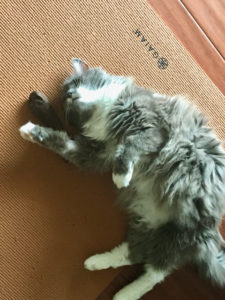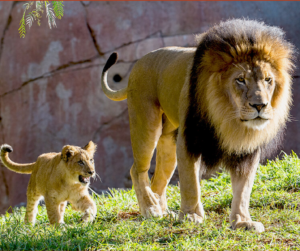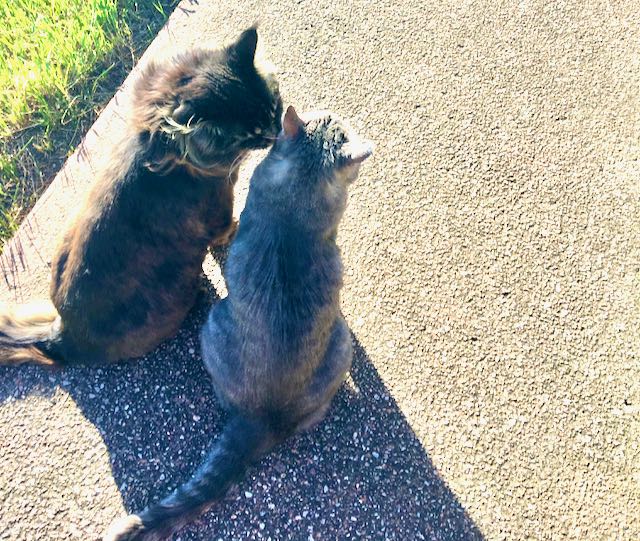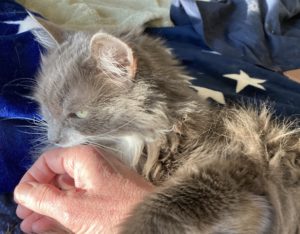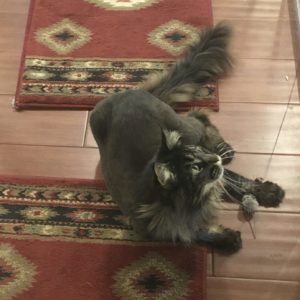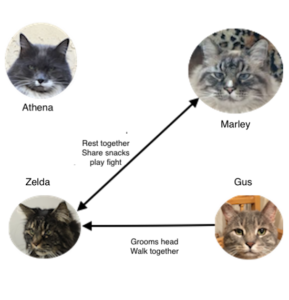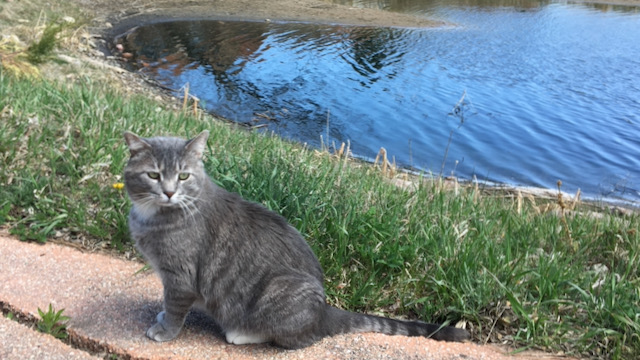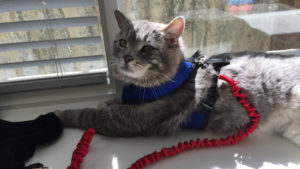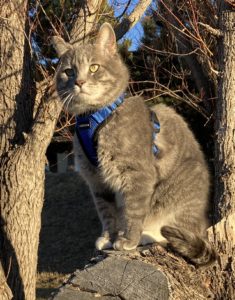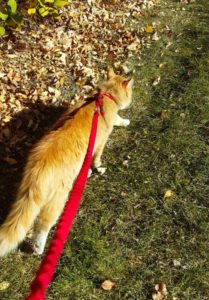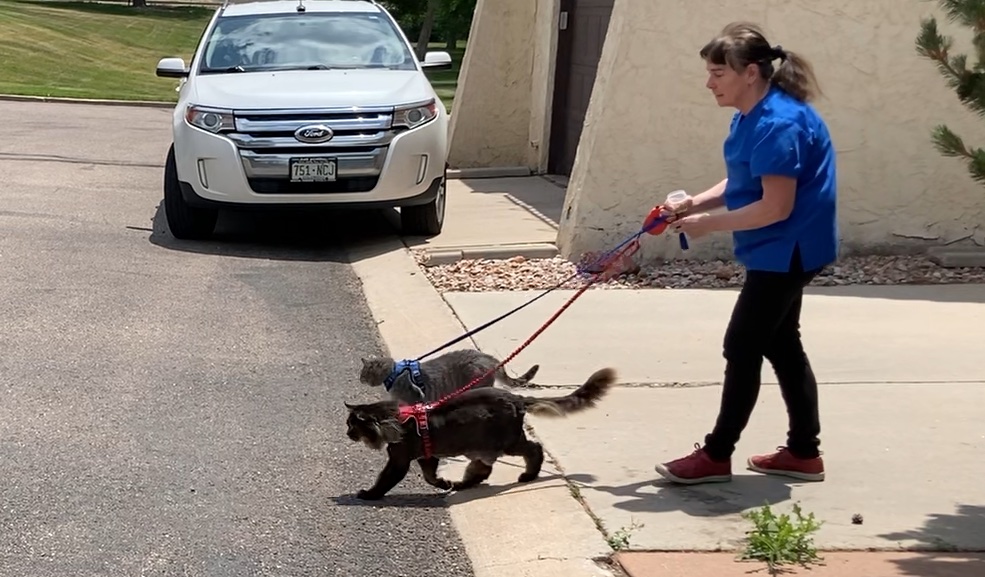
The other day I was walking with Gus around the pond on the condo property. A neighbor came down the path – Gus approached him with his tail up, in greeting. The neighbor did not reciprocate but instead stopped a few feet away from Gus. Gus sat down and stayed still. The neighbor then walked by and muttered “ typical cat” as he passed by.
The neighbor clearly did not understand the tail up greeting. I wondered what he expected from Gus – was Gus supposed to come over wagging his tail? Gus approached with his tail up in friendly greeting. When the greeting was not returned (the neighbor did not offer his hand or get down on Gus’s level), Gus sat, and tried to figure out where the interaction was going – was it hostile or neutral? It certainly was not friendly.
Cats – Mysterious?
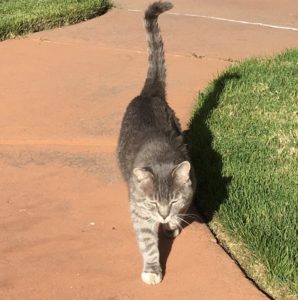 Indeed, we are more familiar with dogs’ body language than that of cats. People see dogs as more social than cats. Someone getting a puppy will plan to take it places, walk it and play with it.
Indeed, we are more familiar with dogs’ body language than that of cats. People see dogs as more social than cats. Someone getting a puppy will plan to take it places, walk it and play with it.
Kittens often stay at home and don’t venture out into the outside world – we don’t have to walk them; after all they have litter boxes. Once the kitten grows into a cat, people often don’t “play” with her that much – after all she is getting older and seems to sleep most of the time. Many cat owners are not aware of the importance of “play” or hunting practice to a born hunter.
cats – social and trainable
In the past few decades, cats have increased in popularity as pets. Consequently, cat behavior and cat care have become popular subjects to study. We have learned that cats are social animals and can be trained. The stereotype of the aloof, antisocial cat is starting to change. We are starting to change how we think about cats.
We have found that kittens learn most efficiently during the “sensitive period, 2-7 weeks of age. Kittens who are handled kindly and gently by a variety of humans during the sensitive period quickly learn to accept people and enjoy being with them. [What Makes a Friendly Cat? ]
In the veterinary world, the Cat-Friendly Practice initiative aims to make vet visits more pleasant for cats and their owners. The Cat Friendly Practice acknowledges that “ cats are not small dogs”. Handling techniques geared toward reducing stress and acknowledgement of the cat’s superlative sense of smell are highlights of this program.
Many of us have had more time at home with our pets in the past year due to the COVID-19 pandemic. There is an increasing trend toward “humanizing” cats and dogs, celebrating their birthdays and giving them Christmas presents. While giving toys or tasty food on special days is harmless, we need to avoid treating cats as small humans in fur suits. They are CATS, a different species with their own behaviors and ways of communicating. [The Cat-Human Bond]
change how we think about cats
A quiet revolution is happening – be part of it. Change how we think about cats. Show people that cats are social and part of the family and that we can communicate with them by training them.
- Train your cat to walk on a leash or ride in a backpack or stroller
- Train your cat to a place in the living room where he can safely hangout while people are visiting
- Video your cat sitting on command and post on social media
- Are you or someone you know getting a kitten? Enroll in a kitten kindergarten or get a group of friends together to do your own!
So take on the challenge. Train your cat – become a “cat whisperer” and change how we think about cats!
Want to keep up with the world of cats? Click the button below and subscribe to The Feline Purrspective!


